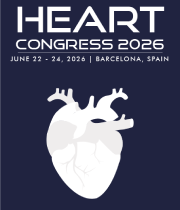Title : Association of thyroid hormones with insulin resistance in female hypertensives with or without type II diabetes
Abstract:
Altered thyroid function is associated with insulin resistance (IR). There are scarce and divergent reports regarding association of thyroid function with insulin resistance in hypertension with or without type 2 DM in African women. The present study aimed at investigating the association between free thyronine (FT3), free thyroxine (FT4) and/or T3/T4 ratio as well as insulin resistance in female hypertensive patients with or without associated type 2 DM.
A cross-sectional study involving female hypertensive patients with or without type 2 DM and healthy controls was conducted. One hundred and twenty-two participants (≥18 years) were recruited and divided into three groups (42 control, 40 hypertensives (HT), 40 diabetic hypertensives (HT+DM). Baseline clinical characteristics and biochemical parameters were evaluated and compared. Serum concentrations of free thyroxine (T4), free thyronine (T3), thyroid stimulating hormone (TSH), fasting plasma glucose, glycated hemoglobin, and triglyceride were determined and T3/T4 ratio was calculated. The homoeostasis model assessment index for insulin resistance (HOMA-IR) was used to evaluate IR.
Mean values of waist circumference, systolic and diastolic blood pressures were significantly higher in the HT (p<0.001) and HT+DM groups (p<0.001) compared to the control. Also, mean values of plasma FT3 were significantly higher in the HT (p=0.042) and the HT+DM (p=0.012) compared to control group. Mean T3/T4 ratio was higher in the HT group than HT+DM group (p=0.016). However, the mean values of FT4 and TSH were comparable in all 3 groups. The mean values of HOMA-IR were significantly higher in the HT (p=0.044) and the HT+DM (p=0.047) compared to control group. HT+DM group had a significantly higher mean value of HOMA-IR than HT. Using multiple regression (stepwise) analysis, there was a relationship between FT3 and IR in the hypertensive group (β=0.606, p=0.017, R2 =0.368) as well as the diabetic hypertensive group (β=3.424, p<0.001, R2 =0.309). Receiver operating characteristic curve showed that the AUC derived for FT3 (0.861) was significantly larger than all other variables for HT group and for HT+DM, area under the curve (AUC) for FT3 was 0.648.
In conclusion, the findings in the present study suggest that FT3 could be a better predictor of IR than FT4 or T3/T4 ratio in hypertensive females with or without type 2 DM.



